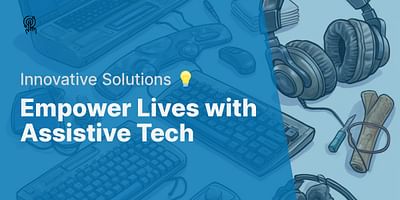Daniela is a dedicated advocate for disability rights and a fervent admirer of technology. With over ten years of experience using assistive tech, her goal is to help others with disabilities utilize the most modern resources and tools. She is deeply committed to making technology accessible for everyone.
Absolutely! One-handed typists can indeed type as fast as two-handed typists with the right tools and practice. While it may seem challenging at first, there are several assistive technologies and techniques available that can help individuals with one hand type efficiently and at comparable speeds.
One-handed keyboards are a popular option for individuals who have limited or no use of one hand. These keyboards are specifically designed to accommodate one-handed typing and often feature a compact layout with keys arranged in a way that allows for easy access. Some one-handed keyboards even come with customizable key mappings, allowing users to personalize the layout to their specific needs. By using a one-handed keyboard, individuals can quickly adapt and develop their typing skills, eventually reaching speeds similar to those of two-handed typists.
Another useful tool for one-handed typists is speech-to-text software. This technology converts spoken words into written text, eliminating the need for manual typing altogether. Speech-to-text software is particularly beneficial for individuals who have difficulty using a keyboard or have limited hand mobility. By simply speaking into a microphone, users can dictate their thoughts, emails, or documents, which are then transcribed into text on the screen. This technology has come a long way in terms of accuracy and ease of use, making it an excellent option for individuals with one hand.
For individuals with dyslexia or other reading difficulties, text-to-speech software can be incredibly helpful. This software reads out written text aloud, allowing users to listen to the content instead of reading it themselves. Text-to-speech software can be used in various applications, such as web browsers, word processors, and e-books, making it easier for individuals with reading challenges to access and comprehend written information.
In addition to assistive technology, accessible web design plays a crucial role in ensuring that individuals with disabilities, including one-handed typists, can navigate and interact with websites effectively. Websites that are designed with accessibility in mind provide features such as keyboard shortcuts, clear navigation menus, and properly labeled form fields, making it easier for one-handed typists to browse and interact with web content.
Furthermore, mobile apps have also become increasingly accessible for one-handed typing. Many apps now offer one-handed keyboard options, allowing users to type efficiently on smaller screens using just one hand. These keyboards often feature adaptive layouts and predictive text, making it easier for individuals with one hand to type quickly and accurately on their mobile devices.
It's important to note that typing speed can vary among individuals, regardless of whether they use one hand or two. With practice and the right assistive technologies, one-handed typists can achieve impressive typing speeds. There are even competitions and records for the fastest one-handed typists, demonstrating that speed is not limited to those who use both hands.
In conclusion, one-handed typists can absolutely type as fast as two-handed typists with the help of assistive technologies such as one-handed keyboards, speech-to-text software, and text-to-speech software. Accessible web design and mobile apps further enhance the typing experience for individuals with one hand. With practice and the right tools, one-handed typists can achieve remarkable typing speeds and effectively communicate in today's digital world.















